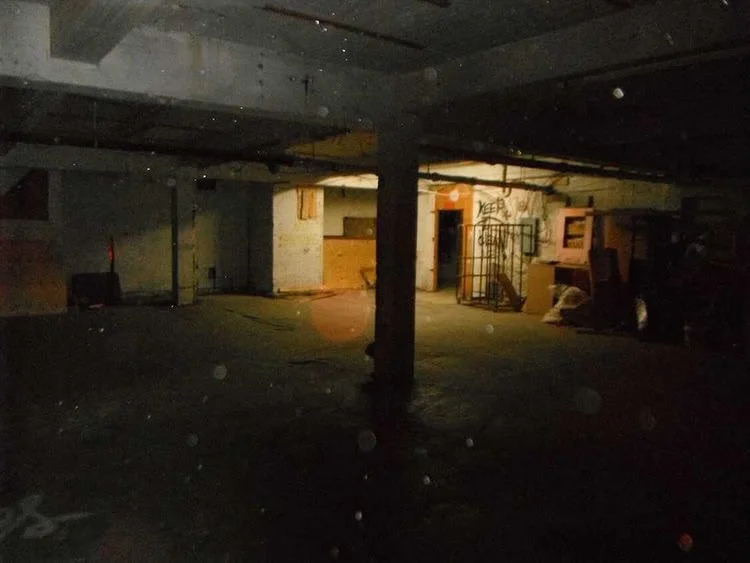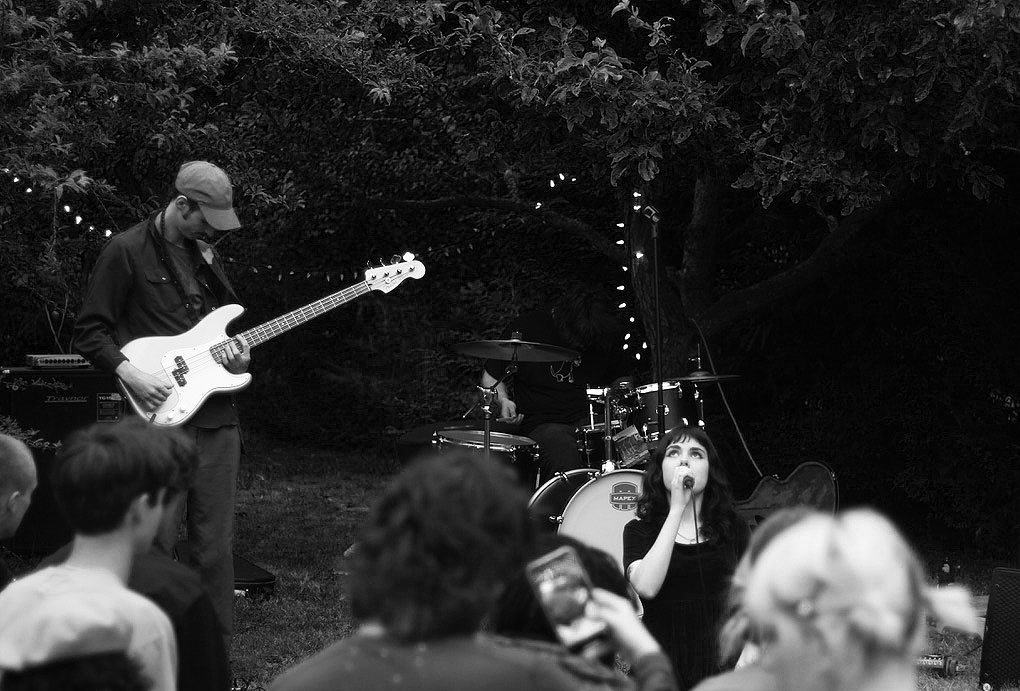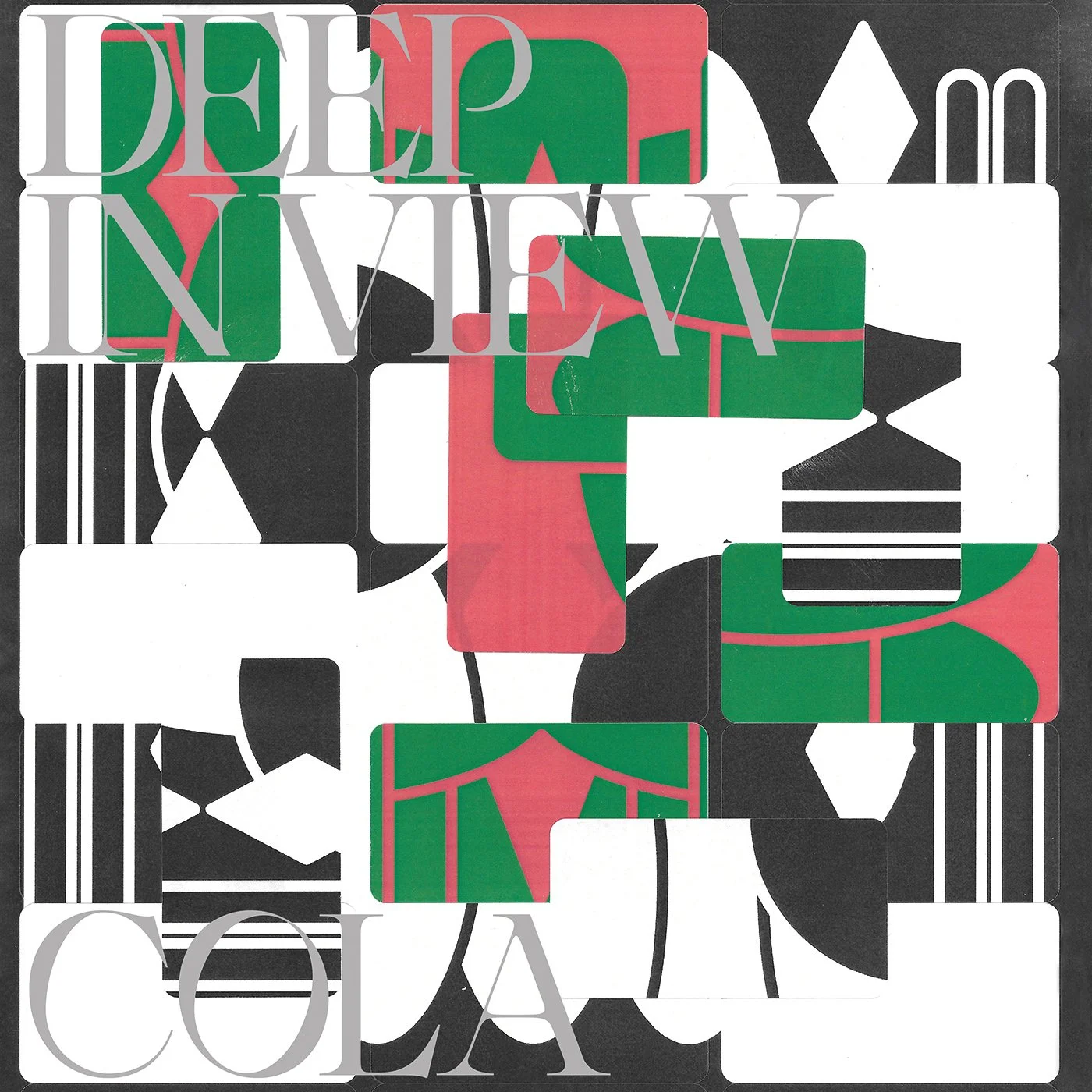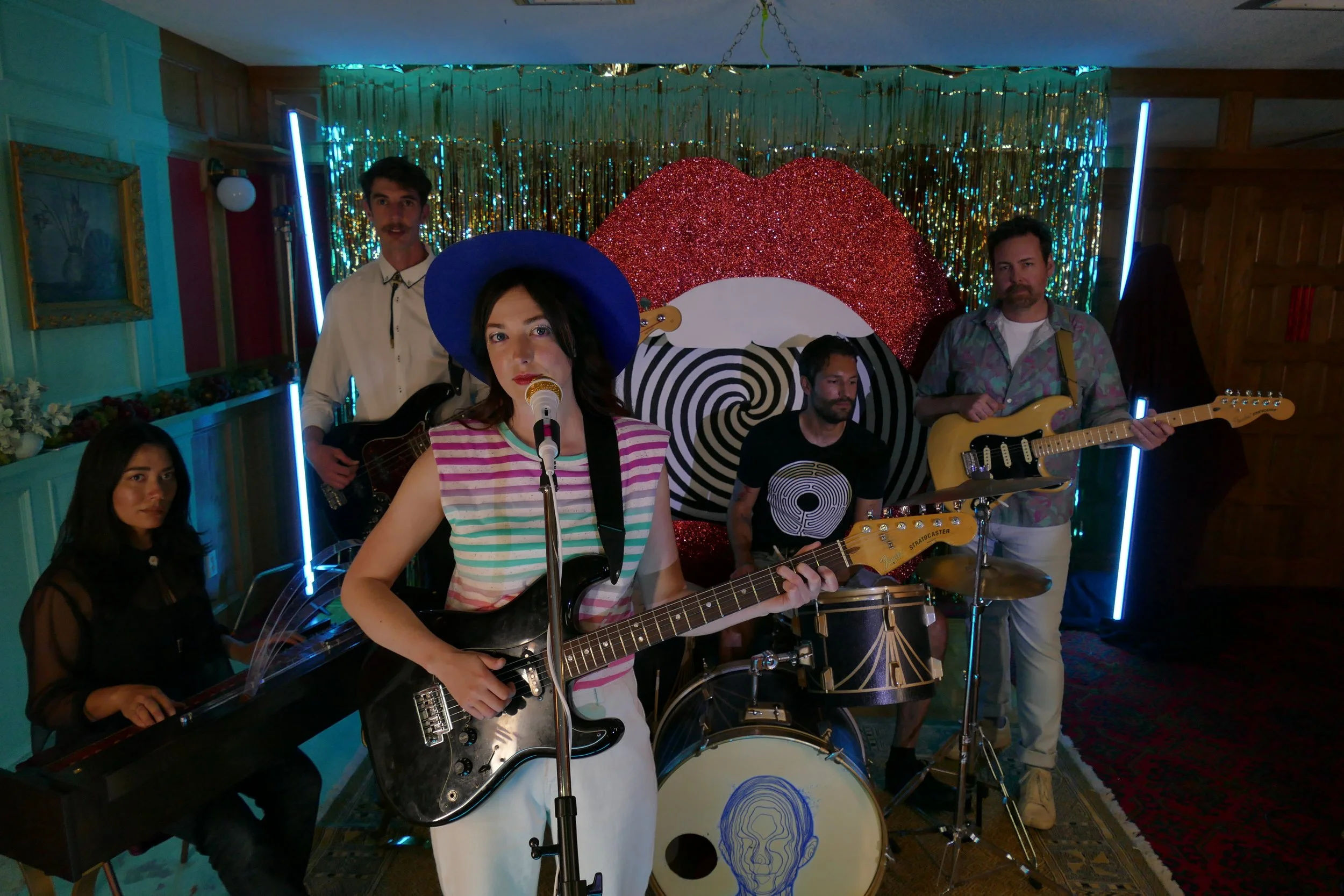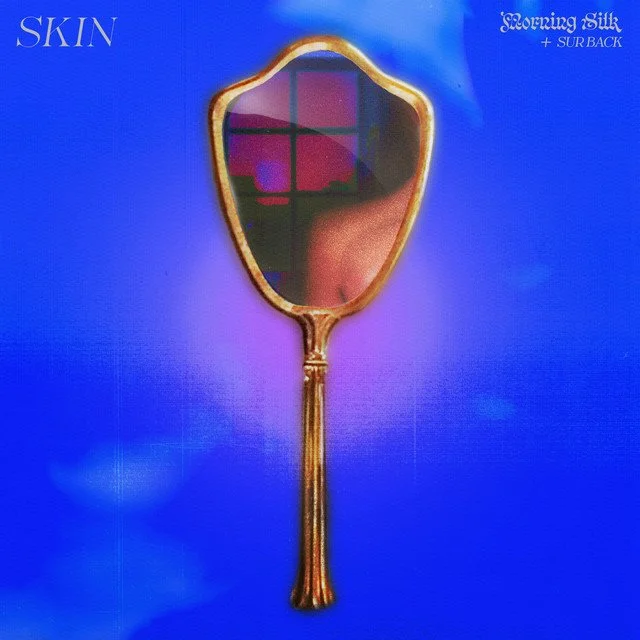Gloin Releases New Album “We Found This”
Gloin by Sara May
This year, Also Cool had the pleasure of meeting Gloin at FME in Abitibi-Temiscamengue. To say we were compelled was an understatement – their songs “Cha Cha” and “Shoot to Kill” were on repeat both directions of the nine-hour drive to the festival.
When we got to see them in the tiny and packed Cabaret de la Dernière Chance, our faces melted off (in the most consensual way). Gloin brings so much energy to the stage and we are absolutely stoked to get the opportunity to interview them in parallel to the release of their latest album, We Found This.
Gloin are knock-out performers, and you cannot help but bop as Vic shreds onstage. While their 2019 album Soft Monster was loaded with head-bangers, there are some more soothing rhythms on We Found This, always with some level of distortion and dark underbelly (a Gloin signature).
They also recently graced Montreal with their presence at M for Montreal, playing at the M for Mothland showcase alongside other Also Cool favourites like Grim Streaker.
In our excitement about their latest release and in Also Cool façon, we had to interview them – not only about We Found This and group dynamics, but also about some of their random thoughts, small favourites surrounding Toronto, and their band as a whole.
Holly Hilts for Also Cool Mag: So, first off, how have your last few months been, between Northern Quebec festival life and your album release – how are you feeling?
Vic: FME and the surrounding shows left me on a high. Since our release, I have been insanely eager to tour and promote the album. I am an impatient person and the process is killing me.
John: FME was a lot of fun, and since then we have released our full-length album. I feel similar to Vic – excited to translate the record to a live setting. It’s always a lot of fun and the songs often sound better.
Richard: The excitement of playing FME was only succeeded by the release of our new record. It’s been exciting to see the positive feedback of something we’ve worked so hard to put out.
Simon: Feeling excited that the record is finally out, and eager to play these songs live.
Also Cool: Listening to the album, I get some really stark imagery – like on “FZero”, I really picture digitized, glitchy marching robotic humans to the beat. Do you have any really clear images that jump out at you while you are playing any of the songs?
R: Skeletons having a luau during “Dark Moto”.
J: “Winter Abroad” is an old song I wrote years ago. It was written specifically to depict looking out a window during a snowy, quiet Toronto morning.
V: “Work Patrol” is less of an image and more of a filter that distorts reality into a chaotic and extremely stressful experience during every single fucking thing you do. Also known as anxiety I guess (laughs).
S: “FZero” is named after the video game, and when we play it I just see them racing.
AC: What is your favourite intersection in Toronto?
J: I don’t have any that I like but I have a lot that I hate. Dundas and Lansdowne, Queen and Spadina, Front and Spadina, Bloor and St. Clair. These are all based on traffic and road work.
R: I don't have a favorite intersection but I have a favorite street, Palmerston between College and Bloor. Also 401 and Major Mack.
V: I’ve got a soft spot for Front and Sherbourne because I had a first kiss with someone very important at the Rabba on the corner where I lived when I first moved to Toronto.
S: Dovercourt and Mackenzie Crescent. Walk up Mackenzie ‘til you get to Lisgar.
Gloin, by Alex Carre
AC: What have you had to learn to accept about each other over the years?
V: I’ve always found it difficult to spend a lot of time with men. So that’s been pretty much the main thing. But to be honest, these guys are pretty chill. Mostly. It does feel like family in a certain way and when one person is not there the rhythm is off.
J: When you spend such a large amount of time with one another, you realize that being friends with people that you don’t see every waking moment is extremely different than spending every waking moment with them. You gain a much deeper understanding of each individual person, you see the good and the bad and you learn to accept everyone's strengths and weaknesses. Not without its setbacks as friends, we have discovered how we all operate and have grown as friends as well as creative partners because of it. Being in a band is not as easy as everyone may think it is, and it takes a lot of work.
R: Everyone works at their own pace. It's good we find time to get shit done together.
S: Learn to call people out when they are slacking and accept it when it happens to you. We all have our own ways of dealing with issues and trusting that process no matter how long it takes.
AC: Your latest album is titled We Found This – what did you find?
Gloin: If you buy the vinyl, there is a handwritten note inside that will explain everything!
AC: How did you figure out your overall sound and how would you describe your growth since Soft Monster?
Gloin: With Soft Monster we did not have a clear direction, and we pulled what liked and expanded on those specifics. We liked the driving energetic vibe, the aggression, and the pop element. We tried to avoid overdone repetitive droning psych elements in order to keep things exciting.
Gloin, by Nikki Dicunto
AC: Favourite lyric on the album, please!
V: I love to yell “RUSH” in “Pitchfork”.
R: I like it when Simon says “Avec des gants de sécurité” from “Brique Chaude”.
J: “Weak mind, be kind” from “FZero”.
S: When Vic yells “HEY BUDDY” from “Work Patrol”.
AC: How do you dream your audience members feel after a show of yours?
R: Exhausted.
V: Relieved, energized, powerful!
J: That we are their new favourite band and they can’t wait to see us again.
S: Confused but happy.
AC: And any last thoughts you would like to share with Also Coolers?
Gloin: If we were cast in The Hangover, John would be Stu, Richard would be Alan, Vic would be Phil and Simon would be Doug.
Gloin - We Found This












































